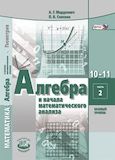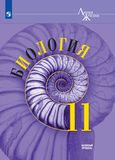Упр.58 Unit 3 ГДЗ Enjoy English 11 класс
58 a) Заполните пропуски. См. раздел «Как бороться со структурными сложностями" в "Стратегии обучения", чтобы помочь вам.
Секреты древнего компьютера
Компьютеры появились в истории раньше, чем вы можете себе представить. Таинственный механизм найден в 2000-летнем греческом кораблекрушении, который возможно, был использован для расчета положения планет, предсказывания, когда затмение произойдет, и для решения других астрономических проблем.
Известный как Антикитерский механизм, устройство 1) (the) размером с коробку из-под обуви. Когда 2) он был найден под водой около 100 лет назад, механизм был 3) в плачевном состоянии. 4) Ее металлические части превратились в одну массу, которая затем распалась на кусочки.
Люди, 5) которые изучали останки от механизма, подозревали, что это 6) (had) что-то делало по астрономии. Чтобы 7) узнать больше, исследователи недавно использовали передовые методы визуализации, включая рентгеновскую компьютерную томографию, чтобы заглянуть внутрь металлических фрагментов для проверки наличия древней письменности на устройстве.
Исследователи обнаружили, 8) что механизм, по крайней мере, имел 30 бронзовых шестерен с 225 зубьями, которые, скорее всего, вырублены 9) (by) вручную.
Свежий взгляд дает четкие доказательства, что устройство можно 10) было бы использовать для вычисления затмений Солнца и Луны. Лунное затмение происходит, 11) когда Луна проходит в тени Земли, и солнечное затмение происходит, 12) когда Луна проходит между Солнцем и Землей.
Ученые подозревают, что механизм 13) был также в состоянии показать движение планет. Пользователь может выбрать день в будущем, и, используя какую-то рукоятку, выработать позицию планеты на 14) эту дату.
По дополнительной информации, исследователи придумали новую модель того, как механизм работает. Все 15) эти данные показывают, что механизм Антикитера был, пожалуй, 1000 лет самой передовой технологией из всего, чтобы было изобретено за свой период времени.
Решение #
1 the
2 it
3 in
4 Its
5 who
6 had
7 out
8 that
9 by
10 been
11 when
12 when
13 was
14 that
15 these/those
b) Прочитайте текст еще раз. Скажите, на что древнее устройство похоже:
• Сколько лет ему?
• Где был найден?
• Как он велик?
• Что он мог делать?
Решение #
b)
The device is 2000 years old and was found in а Greek shipwreck. It is aboul the size of а shoebox. It had something to do with astronomy. It could compute eclipses of the sun and moon and to show the motions of the planets.
Перевод:
Прибору 2000 лет и он был найден в обломках греческого корабля. Он примерно с обувную коробку величиной. Прибор как-то был связан с астрономией. Он мог высчитывать затмения Солнца и Луны и показывать передвижение планет.
Приведем выдержку из задания из учебника Биболетова, Бабушис 11 класс, Дрофа:
58 a) Fill in the gaps. Refer to the "How to deal with structural clozes" in "Learning strategies" to help you.
Secrets of an Ancient Computer
Computers go back farther in history than you might imagine. A mysterious mechanism found in a 2,000-year-old Greek shipwreck may have been used to calculate the positions of planets, predict when eclipses were to occur, and solve other astronomical problems.
Known as the Antikythera mechanism, the device is about (1 ... size of a shoebox. When (2) ... was found underwater about 100 years ago, the mechanism was (3) ... poor shape. (4) ... metal pieces had congealed into one mass, then broken into pieces.
People (5) ... studied what was left of the mechanism suspected that it (6) ...
something to do with astronomy. To find (7) ... more, researchers recently used advanced imaging methods, including X-ray computer tomography, to look inside the metal fragments and to check for ancient writing on the device.
The researchers discovered (8) ... the mechanism had at least 30 bronze gears with as many as 225 teeth, likely all cut (9) ... hand.
This fresh look provided clear evidence that the device could have (10) ... used to compute eclipses of the sun and moon. A lunar eclipse occurs (11) ... the moon passes into Earth's shadow, and a solar eclipse occurs (12) ... the moon passes between the sun and Earth.
Scientists suspect that the mechanism (13) ... also able to show the motions of the planets. A user could pick a day in the future and, using some sort of crank, work out a planet's position on (14) ... date.
With the added information, the researchers came up with a new model for how the mechanism operated. All (15) ... findings show that the Antikythera mechanism was perhaps 1,000 years ahead of anything else discovered from its time period.
b) Read the text again. Say what the ancient device is like:
• How old is it?
• Where was it found?
• How big is it?
• What could it do?
Похожие решебники
Популярные решебники 11 класс Все решебники
*размещая тексты в комментариях ниже, вы автоматически соглашаетесь с пользовательским соглашением







